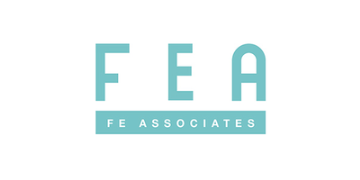A recent MIT study titled Your Brain on ChatGPT has been making waves, once again leading to panic about what AI is doing to our students. But is the study really as shocking as all the hype is making it out to be?
The research followed 54 students from elite universities in the Boston area who were assigned to three groups: ChatGPT users, search engine users, and the ‘brain-only’ group. Students wrote essays on SAT-style prompts, and researchers measured brain activity using EEG before interviewing students about their work.
The findings seem alarming at first glance: 83 per cent of the AI-only group couldn’t accurately quote from essays they’d just written, compared to near-perfect performance from the brain-only group.
In addition, brain scans showed reduced neural connectivity in the former compared to the latter. (Though, to be honest, you could probably use brain scans to show reduced neural connectivity in folk who don’t read a study in its full context too.)
That aside, in a nutshell the brains of AI users were not engaging nearly as much as the non-AI groups.
Ignoring the weaknesses of the study (an extremely small sample group from an elite background working on a single task within a time constraint), its findings shouldn’t come as a surprise to anyone working in a classroom today.
Don’t panic!
That the vast majority of the AI-only group couldn’t remember their essay content makes perfect sense when you consider that these students did very little actual thinking. Of course students can’t discuss content they never actually processed!
The brain scans are also unsurprising. According to some, these show that ChatGPT literally changes how we think. But if you’re not doing cognitive work, your brain doesn’t activate cognitive networks.
The researchers also found that AI users seemed to skip the deep processing that builds lasting memory. Again, this is entirely predictable when students are asked to use AI as their primary writing tool rather than as a strategic support. If you’re not wrestling with ideas, you’re not encoding them deeply.
None of this is unique to AI. They’re just predictable outcomes of cognitive offloading. In reality, researchers simply observed what happens when students fully hand over their thinking to an AI system – or indeed any over-helpful partner.
The fundamental issue isn’t that AI is destroying our brains, but that complete delegation of our thinking to any external tool can undermine learning. Instead of feeding AI panic, the study should act as a reminder that we need to be strategic about cognitive offloading.
Your class on ChatGPT
As teachers know, reducing cognitive load can enable students to engage in deeper thinking. So it makes sense to do so with AI too, provided we’re being intentional and not lazy.
Here are three types of cognitive offloading and what they might look like when used strategically in an AI-empowered (not AI-powered!) classroom.
External normalisation
This is when you physically arrange your environment or tools to make thinking easier.
Teachers already do this when they ask students to highlight key passages in a text, put sticky notes on specific book pages or colour-code their notes. These are ways of creating ‘visual landmarks’ to make information retrieval easier.
External normalisation is generally a ‘safe’ form of cognitive offloading because students are still doing the thinking – they’re just making it easier for their brains to manage.
Positive external normalisation alongside AI might look like this:
- Demonstrating how to use AI to reorganise information you already understand, not to learn new content
- “Organise my notes on [topic] into bullet points under clear headings”
- “Format this information I’ve gathered into a comparison table”
- Encouraging AI use for visual organisation, templates and formatting while students provide the actual information
- “Create a template for comparing [concepts I’ve studied]”
- “Generate a blank framework for organising my ideas about [topic]”
- After using AI to organise, requiring students to explain the content in their own words to ensure comprehension.
Intentional offloading
This is when you create external systems to remind you to do something later.
For students, this already includes activities like writing homework assignments in their planners, creating to-do lists for multi-step projects and bookmarking websites they need to return to for research.
Similarly to external normalisation, intentional offloading is also a relatively safe form of cognitive offloading. In fact, when students get better at this type of offloading, they often become better learners because their cognitive resources are focused learning rather than admin.
AI can support here too:
- Students can self-assess their knowledge gaps first, then direct AI to create a to-do list based on the gaps they’ve identified.
- “Produce a study checklist for the topics I’ve identified as challenging, to be completed over the next 6 weeks”
- “Create a to-do list addressing these knowledge gaps I’ve discovered”
- You (or your students) can structure AI support to decrease systematically as student self-regulation skills develop, ensuring offloading builds rather than replaces learning capabilities.
- And don’t forget to regularly discuss when and why to use external reminders versus developing internal memory strategies.
Transactive memory systems
These are when you rely on other people (or technology) to remember certain types of information because you know you can access it when needed. You don’t store the information yourself; you store knowledge about where to find it.
For example, student might use classroom displays to help remember systems (like AFOREST in English classrooms), or bookmark a list of the best websites to find certain information so they don’t have to search from scratch every time.
Transactive memory systems with AI are where things can get a little tricky. Students need to be strategic about what they’re choosing not to remember themselves. In other words, they need to think about when it’s right to use AI and when it isn’t.
This might look like:
- Designating specific times, assignments or assessments where students must rely on their own memory rather than an external tool
- Explicitly discussing how over-reliance on AI can erode our own abilities and our confidence in our abilities
- Modelling appropriate boundaries and demonstrating when it’s reasonable to look something up versus when you should know it from memory
Credit where it’s due
In sum, Your Brain on ChatGPT doesn’t prove that AI is dangerous; it proves that thoughtless use of AI is counterproductive.
The study’s full title mentions “cognitive debt”. Perhaps what we really need to focus on is building “cognitive credit”, strategic approaches to AI use that enhance rather than replace human thinking.
It could even help us to come up with more approaches to do this. Like using it to help structure your ideas and then proofread your article entitled ‘Your brain on ChatGPT’? Not if you use it right, for example…
Amelia King will be speaking about cognitive offloading at the Festival of Education on 4 July. See details here












Your thoughts